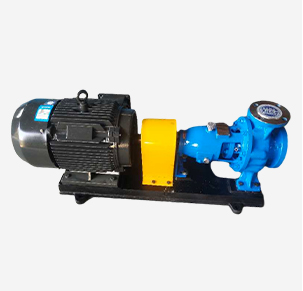Yoruba
- Afrikaans
- Albanian
- Amharic
- Arabic
- Armenian
- Azerbaijani
- Basque
- Belarusian
- Bengali
- Bosnian
- Bulgarian
- Catalan
- Cebuano
- Corsican
- Croatian
- Czech
- Danish
- Dutch
- English
- Esperanto
- Estonian
- Finnish
- French
- Frisian
- Galician
- Georgian
- German
- Greek
- Gujarati
- Haitian Creole
- hausa
- hawaiian
- Hebrew
- Hindi
- Miao
- Hungarian
- Icelandic
- igbo
- Indonesian
- irish
- Italian
- Japanese
- Javanese
- Kannada
- kazakh
- Khmer
- Rwandese
- Korean
- Kurdish
- Kyrgyz
- Lao
- Latin
- Latvian
- Lithuanian
- Luxembourgish
- Macedonian
- Malgashi
- Malay
- Malayalam
- Maltese
- Maori
- Marathi
- Mongolian
- Myanmar
- Nepali
- Norwegian
- Norwegian
- Occitan
- Pashto
- Persian
- Polish
- Portuguese
- Punjabi
- Romanian
- Russian
- Samoan
- Scottish Gaelic
- Serbian
- Sesotho
- Shona
- Sindhi
- Sinhala
- Slovak
- Slovenian
- Somali
- Spanish
- Sundanese
- Swahili
- Swedish
- Tagalog
- Tajik
- Tamil
- Tatar
- Telugu
- Thai
- Turkish
- Turkmen
- Ukrainian
- Urdu
- Uighur
- Uzbek
- Vietnamese
- Welsh
- Bantu
- Yiddish
- Yoruba
- Zulu
Telephone: +86 13120555503
Email: frank@cypump.com
Nov . 21, 2024 11:11 Back to list
sewage treatment pump
Understanding Sewage Treatment Pumps Importance and Functionality
Sewage treatment pumps play a crucial role in maintaining the hygiene of our environment by effectively managing wastewater. As urbanization continues to rise and populations swell in various parts of the world, the importance of efficient sewage management cannot be overstated. This article delves into the significance, functionalities, and types of sewage treatment pumps, highlighting their role in modern wastewater treatment facilities.
The Importance of Sewage Treatment Pumps
Sewage treatment pumps are essential in the wastewater treatment process, facilitating the movement of sewage from homes, industries, and commercial establishments to treatment facilities. These pumps ensure that sewage is effectively transported for treatment, preventing the overflow of untreated waste into the environment, which could lead to pollution and health hazards. Efficient sewage handling helps maintain public health by minimizing the risks associated with wastewater contamination in drinking water and recreational areas.
With an increasing focus on environmental sustainability, sewage treatment pumps also contribute to the recycling of water. Treated sewage can be reused for irrigation, industrial applications, and even as part of the drinking water supply in some advanced systems. This recycling process underscores the pump's role in not just treating sewage but also conserving precious water resources in an era of growing scarcity.
Functionality of Sewage Treatment Pumps
Sewage treatment pumps can handle various types of sewage, including domestic effluent, industrial wastewater, and stormwater. These pumps are designed to efficiently move sewage through the treatment process, which typically includes several stages such as screening, sedimentation, biological treatment, and disinfection.
1. Screening The initial step involves removing large solids such as plastics and debris, which could damage downstream equipment. Pumps transport the raw sewage to screening systems where these materials are filtered out.
2. Sedimentation After screening, the sewage is pumped to sedimentation tanks. In this stage, gravity helps to separate solids from liquids, allowing the denser materials to settle at the bottom while the lighter effluents remain on top.
sewage treatment pump

3. Biological Treatment The next phase involves biological processes where microorganisms break down organic matter. Sewage treatment pumps maintain the flow of the effluent through aeration tanks, ensuring sufficient oxygen is supplied for the microorganisms to thrive.
4. Disinfection Finally, the treated sewage may undergo disinfection processes such as chlorination or ultraviolet irradiation to eliminate pathogens before being released into water bodies or reused.
Types of Sewage Treatment Pumps
Several types of pumps are employed in sewage treatment processes, and each comes with its unique specifications suited for different stages of treatment
- Submersible Pumps These are designed to operate underwater. They are submerged in the sewage and can effectively handle solid materials and larger volumes of sewage, making them ideal for pumping sewage to the surface for further treatment.
- Centrifugal Pumps Widely used in sewage treatment facilities, centrifugal pumps work by converting rotational energy into hydrodynamic energy. They are efficient for moving large volumes of liquid at low pressures, making them suitable for transferring treated effluent.
- Positive Displacement Pumps These pumps are used when a reliable flow rate is essential. They work by trapping a fixed amount of sewage and forcing it through the discharge pipe. This type is vital in processes requiring high precision in flow rates.
Conclusion
In conclusion, sewage treatment pumps are integral to the wastewater management system, ensuring the seamless movement of sewage through various treatment stages. Their design and functionality not only protect environmental and public health but also pave the way for sustainable water management practices. As technology advances, the efficiency and effectiveness of these pumps will enhance, allowing for improved sewage treatment processes and better protection of our ecosystems. Investing in the development of advanced sewage treatment systems and pumps will be crucial as we navigate the complexities of urbanization and environmental conservation in the 21st century.
-
Heavy-Duty Mining Sludge Pumps - Wear-Resistant Slurry Handling
NewsAug.02,2025
-
Horizontal Split Case Pump with GPT-4 Turbo | High Efficiency
NewsAug.01,2025
-
ISG Series Pipeline Pump - Chi Yuan Pumps | High Efficiency, Durable Design
NewsAug.01,2025
-
Advanced Flue Gas Desulfurization Pump with GPT-4 Turbo | Durable & Efficient
NewsJul.31,2025
-
ISG Series Vertical Pipeline Pump - Chi Yuan Pumps | Advanced Hydraulic Design&Durable Construction
NewsJul.31,2025
-
ISG Series Vertical Pipeline Pump - Chi Yuan Pumps | Energy Efficient & Low Noise
NewsJul.31,2025










